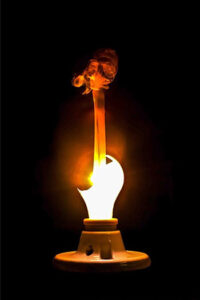
Linda in Northfield, Mensagenda Editor
About Mensagenda
Minnesota Mensa published Vol. I, No. 1 of our newsletter, then called the Minnesota Mensa, in June of 1965. Approaching six decades later and winning awards along the way, we continue to provide a monthly publication, now called Mensagenda.
As expected in a newsletter, we inform our local membership with organizational updates and provide details about our events. The real benefit is that, just like our events, Mensagenda is for our members, by our members.
The love of learning in Mensa is not just about supporting our scholarship but in enriching your own mind and sharing your knowledge, skills, and interests. Read articles and regular columns ranging from scientific explanations to humor in everyday life. Check out our members’ photography, drawing, painting, knitting and quilting, and crafting skills.
What would you like to share? Do you have expertise in a particular field of study or hobby? Want to express your opinion? Have you traveled recently? Do you write poetry? Can you create word games, numerical puzzles, or trivia questions? What could you say about…well, you get the picture.
Mensagenda is another way that Minnesota Mensa provides “a stimulating intellectual and social environment for its members.” What could you contribute if you joined Mensa?
There’s More to Read
Mensa membership provides access to the publications from other chapters, American Mensa, and Mensa International. Click here to learn more.
Featured Cover Art

The Light Bulb. Photo by Doug in Apple Valley.
Whos On First
by Cheryl in Roseville
One of the seasonal discussions that goes on around here is which holiday movies and shows we might watch. The Beloved loves the Rankin/Bass classic stop-motion animation Rudolph the Red-Nosed Reindeer. It reminds him of his childhood.
It reminds me of childhood, too. That’s exactly why I don’t like it.
To start with, Rudolph is born with a facial difference. His father could teach little Rudy that it is what’s in his heart matters, not what’s on his muzzle, but instead packs mud all over the kid’s nose. Blocking the use of a major sense organ in the name of cultural compliance? Even in 1964, that was some sketchy parenting. I knew some moms and dads who banned their teens’ favorite music from the house, but none of them stuffed the kids’ ears full of cotton.
Rudolph’s peers laughed at him, called him names, and refused to let him join in the reindeer games. That kind of bratty behavior was going on in the back yard of the guy who keeps the “Naughty” and “Nice” lists and none of those nasty calves were the least bit concerned. That means Santa was either complicit in the hazing, or he was clueless. To paraphrase Sherlock Holmes, he may see you when you’re sleeping, but he does not observe.
When Rudolph finally has enough and decides to run away, he is joined by fellow misfit Hermey. Hermey looks different from the other elves (big eyes, round ears), but that isn’t the problem. Hermey’s issue is that he has ideas—dentistry—beyond his station. He wants to drill into teeth, not toys. He is shamed for his dream and asked why he can’t be like all the other elves. That’s more than conformity; that’s a holly jolly caste system. Really, it’s the same story arc as the first act of . . . Hey! Someone sic Lin-Manuel Miranda on this: Hermey the musical, with the show-stopping number “My Shot (Of Novocain).”
Our heroes end up on the Island of Misfit Toys, a place where ill-conceived and misshapen playthings have been dumped. (That some of these might have been created by a certain disinterested elf is never discussed.) Here we learn just how little deviation it takes to merit exile. Charlie-in-the-Box has an unexpected name. In a toy meant to create surprise, what’s the problem? The stuffed elephant has polka dots, the very definition of a superficial flaw. The crying dolly? Well, OK, she has issues but nothing a little therapy and Prozac couldn’t help. Or maybe not treating her like a freak and committing her to Santa’s Sanitarium.
In the end, Rudolph becomes loved and goes down in history only because his previously-repulsive glow proves useful to his assorted tormentors. If the weather hadn’t turned bad, would he have been welcomed home so happily? I like my umbrella just fine, but on sunny days, I keep it in a dark closet. Would Rudolph have suffered a similar fate?
This is why, when it is my turn to pick, I go for How the Grinch Stole Christmas (1966). Most of the characters are good people (well, Whos). Even the henchdog, Max, hasn’t any ill will in him. The Grinch’s heart grows three sizes because he sees the Whos love the spirit of Christmas and not the trappings. He changes his ways to share in the joy, not to exploit some hidden power little CindyLou Who has. It’s a much better story and a more inspirational message.
Unless you’re a vegetarian. That poor roast beast.